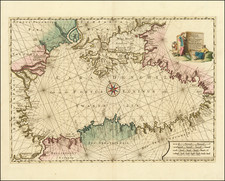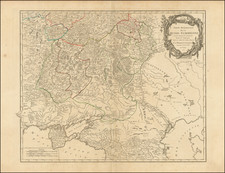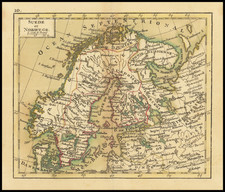Colored example of Mercator's map of Armenia, Georgia, eastern Turkey, and parts of Ukraine and Southern Russia, from Mercator's Geographia, first published in 1578 and republished in Amsterdam beginning in 1695.
Includes decorative cartouche and sea monster.
Gerard Mercator published his edition of Ptolemy’s maps as what he intended as a companion to his Atlas of the Modern World. Beginning with the 1695 edition, the plates were re-worked, substituting a new cartouche within the map, containing a second title.
Gerard Mercator is one of the most famous cartographers of all time. Mercator was born in Flanders and educated at the Catholic University in Leuven. After his graduation in 1532, Mercator worked with Gemma Frisius, a prominent mathematician, and Gaspar a Myrica, a goldsmith and engraver. Together, these men produced globes and scientific instruments, allowing Mercator to hone his skills.
With his wife, Barbara, Mercator had six children: Arnold, Emerentia, Dorothes, Bartholomeus, Rumold, and Catharina. In 1552, Mercator moved to Duisburg from Leuven, where he lived for the rest of his life. In 1564, he was appointed the official cosmographer to the court of Duke Wilhelm of Cleve.
Mercator’s most important contribution was the creation and popularization of a projection which now bears his name. On Mercator projection maps, all parallels and meridians are drawn at right angles to each other, with the distance between the parallels extending towards the poles. This allowed for accurate latitude and longitude calculation and also allowed navigational routes to be drawn using straight lines, a huge advantage for sailors as this allowed them to plot courses without constant recourse to adjusting compass readings.
Mercator’s other enduring contribution to cartography is the term “atlas”, which was first used to describe his collection of maps gathered in one volume. The Mercator atlas was published in 1595, a year after Mercator’s death, thanks to the work of his sons, particularly Rumold, and his grandsons.









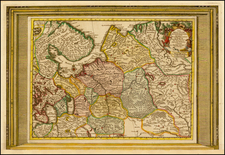
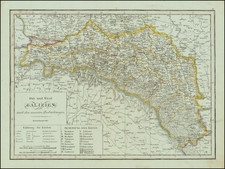
![(Second World War - Operation Barbarossa) A M. Kir. VIII. Honv. LGV. O. Hazamenetelének útja mecsebjelovkától kassáig [The Hungarian 8th Anti-Aircraft Battalion's Homeward Route from Mechebylove to Kosice]](https://storage.googleapis.com/raremaps/img/small/90242.jpg)
